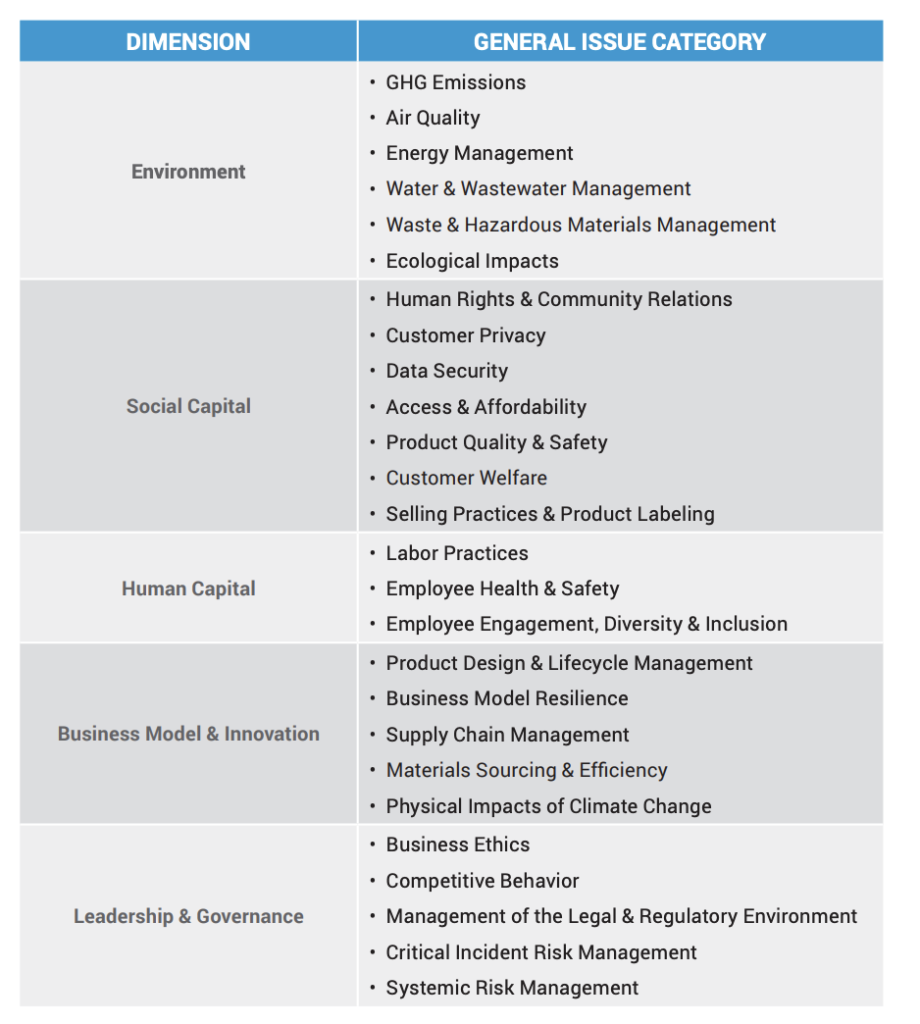Data Strategy
What is sustainability data strategy?
To accurately analyze the sustainability information, users must establish a baseline understanding of the “universe” of sustainability issues—the range of environmental, social, and governance topics that can impact company performance. Such comprehensive competency details can help identify current and future risks and opportunities. For investors, the same competency enables more complete and nuanced analysis of risks and opportunities.
There are five key dimensions of sustainability data – Environmental, Social, Human, Business model & innovation, and Leadership & Governance.
What is sustainability data all about?
Sustainability issues in the environment dimension impact a company either through the use of nonrenewable, natural resources as inputs to production, or through harmful releases into the environment. The environment aspect of ESG covers the below critical areas
– Climate change and carbon emissions
– Air and water pollution
– Biodiversity
– Deforestation
– Energy efficiency
– Waste and Hazardous material management
– Water and Wastewater management
– Ecological impacts
The social aspect relates to the expectation that the business will contribute to soceity in return for building long standing relationship with all stakeholders such as the public, customers, local communities and governments.
The social dimension of ESG covers the below critical areas
– Human rights and Community relations
– Customer privacy
– Dat security
– Access and Affordability
– Product quality and Safety
– Customer Welfare
– Selling practices
– Product labeling
Human capital defines human resources as key assets to delivering long-term value. A company’s human capital performance depends on the productivity of employees, the management of labor relations, and the health and safety of employees. Good human capital management fosters workforce well-being and generates positive workplace culture. It can enhance personal development and social inclusion in the service of productivity and competitive employment. Poor human capital management, on the other hand, can reduce productivity, increase risk, and harm customer relationships.
Key information pertaining to the human capital are:
Labor practices
Employee health & safety
Employee engagement
Diversity & Inclusion
The Business Model & Innovation dimension explicitly addresses the integration of environmental, human, and social issues in a company’s value-creation process. This includes topics related to process innovation, such as resource recovery, and product innovation, including efficiency and responsibility in the design, use phase, and disposal of products. The information captured in this dimension include:
Product design & lifecycle management
Business model resilience
Supply chain management
Material sourcing & efficiency
Physical impacts of climate change
Governance involves the management of issues that are inherent to a company’s business model or that constitute common practice in the industry and that are in potential conflict with the interest of broader stakeholders and therefore may create liabilities or hinder license to operate. The leadership & governance aspect of ESG covers
– Business ethics
– Competitive behavior
– Management of legal and regulatory environment
– Critical incident risk management
– Systemic risk management

Why should we care?
One of the key issues with sustainability data as compared to others is that sustainability data has not grown in pace with sustainability frameworks, standards, and approaches i.e. for data to be decision-useful, it needs to be consistent, comparable, and reliable similar to financial data sources used in financial analysis. Sustainability is a fairly new domain, and many organizations have not kept in pace with verifiable and audited data sources that can be used for performance assessment and investor decision-making.
By having a robust data foundation, companies can clearly articulate the factors that create, preserve and erode enterprise value over time.
Challenges with sustainability data
Integration of consistent, comparable, and reliable sustainability information yield benefits to craft strategies, improve decisions and engage broader market participants. Current data come with a wide range of challenges, including the following.
- Currently, many companies issue policy data and lack performance data
- Quantitative data is not always comparable
- Range of scoring methods and calculations for emissions reduction
- Information is not often comprehensive
- Lack of governance in place to collect quality data
